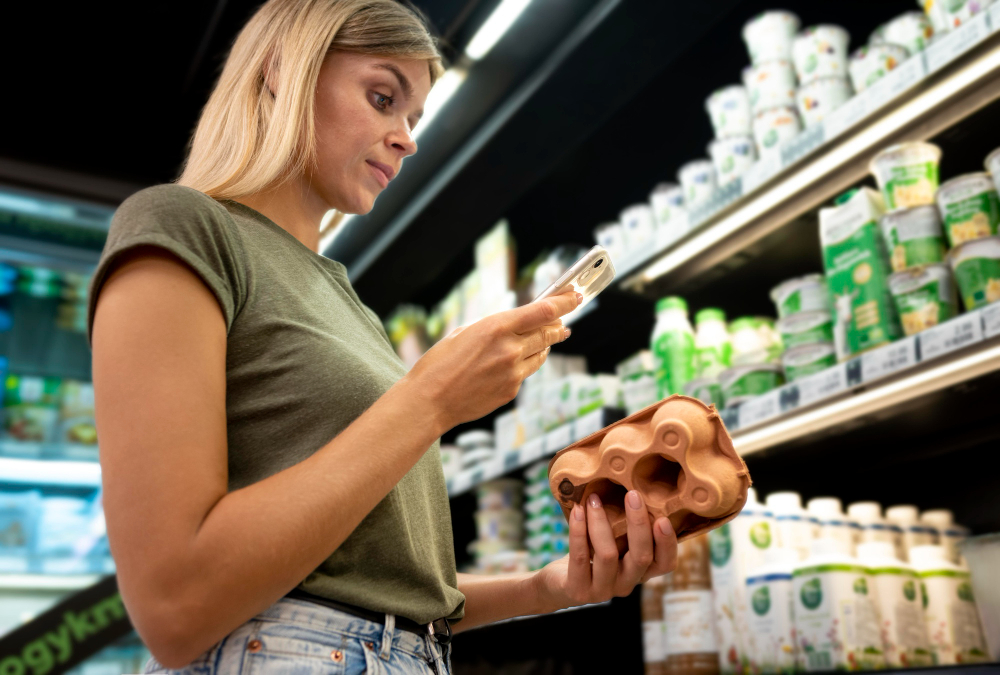Image credit: food business news
As many consumers change their buying habits during the pandemic; the food industry will follow suit as well. Some questions the food industry may ask; are consumers still looking at clean labels during this time? Is the percentage of consumers looking at clean label different now than before? More consumers are buying frozen, and packaged products while others are gardening and cooking at home more. Will this be an important factor using clean label? The way people shop & eat has changed during these three months. This will cause drastic changes in the food industry such as, new technologies that companies will implement, consumer behaviors & food service changes.
Foodnavigator.com mentions that consumers are looking at clean label during the pandemic to increase immunity, and improve health. This shows an increase in interest in clean label during this crisis than before. Food manufacturers will face challenges to reformulate their products. For example, consumers will expect similar texture, flavor, and aroma that they are used to. The food industry will have to keep this in consideration during reformulation.

What is clean label?
As Shelke mentions from the Food Technology Magazine mentions, “Despite the positive outlook, manufacturers and ingredient suppliers remain perplexed because clean label has no legal, scientific, or accepted industry-wide definition. The connotation of “clean” tends to be in the eyes of the beholder. Additionally, what’s perceived as clean today may not necessarily be so tomorrow or whenever another activist spreads misinformation on the Internet. Clean label tends to embrace a wide range of ambiguous terms such as “all natural,” “humane,” “whole foods–based,” “minimally processed,” “GM-free,” and “locally grown,” which are arbitrarily equated with wholesomeness and “better for you” claims without scientific evidence for substantiation. The clean label movement is a call to action in the food industry and policy makers to put an end to pseudo-science and fad nutrition by embracing science.” As you can see, each person you talk to will have a different explanation of what clean label is. So, make sure the source is credible. For example, the video from ift.org gives a clear definition of what clean label is, and it’s from a credible source:
Clean label awareness increasing & alternative ingredients
Shelke continues, “Ingredion conducted a global consumer insights study with 30,000 participants in 37 countries to understand the factors that influence consumer choice. “Globally, 82% of consumers find it important to recognize the ingredients in the foods and beverages they buy, and for 81%, a short and simple ingredient list is important,” says Pat O’Brien, Ingredion regional platform leader, clean & simple ingredients, U.S./Canada.” It’s a little early to tell how this pandemic will affect clean label.
As consumers are requesting more clearly labelled ingredients on products; more and more manufacturers are using alternative ingredients. For example, Food Technology Magazine mentions the following, “Organic Valley positions its Organic Fuel Whey Protein Powder for clean label shoppers with the claim that it does not contain “unnecessary additives you can’t pronounce, artificial flavorings or sweeteners, GMOs, pesticides, antibiotics, or hormones.” Others are replacing chemical names with more natural ingredients. For example, Azo dyes which have a function for coloring in products are replaced with natural fruit coloring such as, turmeric, carrot, or beet colors.
Check out a list of alternative ingredients provided at ift.org:
Clean label certification
Companies such as the clean label project are providing different certifications. This provides food manufacturers with a logo that can be added to their product. For example, THC free certified logo is one way for food manufacturers to provide consumers with ingredient transparency. This logo shows consumers that there are no THC in their CBD products:
References
2. Shelke, Kantha (February 1, 2020). Clearing Up Clean Label Confusion. Food Technology Magazine. Institute of Food Technologists. Website: https://www.ift.org/news-and-publications/food-technology-magazine/issues/2020/february/features/clearing-up-clean-label-confusion
3. Crawford, Elizabeth (June 30, 2020). Shift 20: Brands Rediscovered during pandemic my need updated, clean labels to keep new shoppers, says DDW. Food Navigator. Website: https://www.foodnavigator-usa.com/Article/2020/06/30/DDW-Brands-rediscovered-during-pandemic-may-need-updated-clean-labels-to-keep-new-shoppers#
